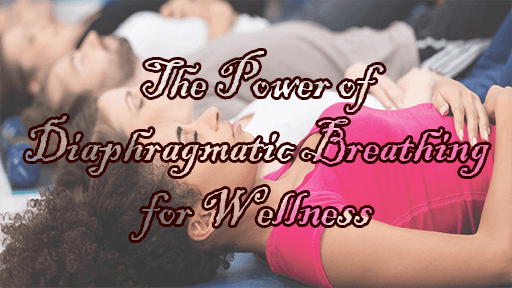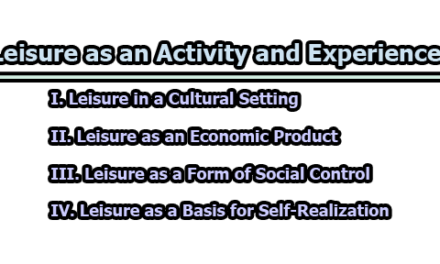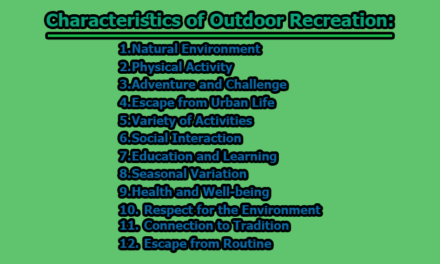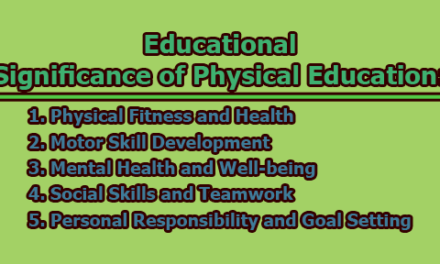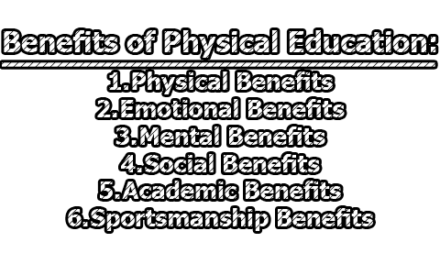The Power of Diaphragmatic Breathing for Wellness:
Diaphragmatic breathing is a deep breathing technique that emphasizes the active contraction of the diaphragm, a muscle responsible for respiration. This technique involves inhaling slowly and deeply through the nose, using the diaphragm to raise the abdomen while minimizing chest movement. Diaphragmatic breathing has various physiological and psychological benefits, including improving respiration rate, oxygen saturation, and overall wellness. In the rest of this article, we are going to know about the power of diaphragmatic breathing for wellness.
1. Structure and Function of the Diaphragm:
The diaphragm is a crucial anatomical structure in the human body, serving as the primary muscle responsible for the process of respiration. Here is a more detailed description of its structure and function, supported by authentic citations:
1.1 Structure of the Diaphragm: The diaphragm is a large, thin, and dome-shaped muscle that spans the area beneath the ribcage. It is situated between the thoracic and abdominal cavities. Composed of a combination of muscle and tendinous fibers, it forms a partition that effectively separates these two anatomical regions. This muscle is located just beneath the lungs and above the liver, with its curved shape resembling an inverted bowl.
1.2 Function of the Diaphragm:
- Respiration: The primary function of the diaphragm is to facilitate the process of respiration. During inhalation, the diaphragm contracts and moves downward towards the abdominal cavity. This downward movement results in an expansion of the chest cavity and a simultaneous increase in lung volume. As the chest cavity enlarges, air is drawn into the lungs, allowing for oxygen to be absorbed into the bloodstream. This is known as the inspiration phase of breathing.
- Exhalation: Conversely, during exhalation, the diaphragm relaxes and returns to its original dome-like shape. This relaxation of the diaphragm reduces the volume of the chest cavity and increases pressure within the lungs. As a result, air is expelled from the lungs, enabling the removal of carbon dioxide from the body. This phase is known as expiration.
- Non-Respiratory Functions: In addition to its central role in respiration, the diaphragm also plays a significant part in various non-respiratory activities. For instance, it is actively engaged during vomiting, a process that involves the forceful expulsion of stomach contents. The diaphragm also comes into play when individuals lift heavy objects, where it helps stabilize the trunk and maintain proper posture. It is the muscle responsible for laughter, as the rhythmic contractions of the diaphragm contribute to the production of laughter sounds. Furthermore, the diaphragm is involved in activities like hiccupping and assisting in the process of childbirth.
1.3 Clinical Significance and Dysfunction: Dysfunction of the diaphragm can have clinical implications. It can lead to a range of respiratory symptoms, including shortness of breath, difficulty breathing, and reduced exercise tolerance. In cases of severe diaphragmatic dysfunction, individuals may experience sleep-disordered breathing, such as sleep apnea, where irregular breathing patterns occur during sleep, leading to disruptions in the sleep cycle.
2. Diaphragmatic Breathing and Relaxation:
Diaphragmatic breathing is not only a fundamental aspect of respiration but also holds the potential to induce a profound sense of relaxation and promote overall well-being. One of its key mechanisms for achieving relaxation is its ability to stimulate the vagus nerve, which passes through the diaphragm. This stimulation triggers a parasympathetic response, leading to a shift in the autonomic nervous system and promoting relaxation.
The vagus nerve, also known as the tenth cranial nerve, is a crucial component of the autonomic nervous system. It plays a central role in regulating various bodily functions, including heart rate, digestion, and respiratory rate. This nerve consists of both sensory and motor fibers, allowing it to transmit information from the body to the brain and carry instructions from the brain to the body.
2.1 Vagus Nerve Stimulation through Diaphragmatic Breathing: The diaphragm, as the primary muscle of respiration, is intricately connected to the vagus nerve due to its location and role in the breathing process. When individuals engage in diaphragmatic breathing, focusing on slow and deep inhalations that emphasize the expansion of the abdomen, the diaphragm contracts rhythmically. This rhythmic contraction has a direct impact on the vagus nerve, as it passes through the diaphragm.
As individuals inhale deeply and diaphragmatically, the expansion of the diaphragm applies pressure to the vagus nerve. This mechanical stimulation of the vagus nerve sends signals to the brain, activating the parasympathetic nervous system. The parasympathetic response is often referred to as the “rest and digest” state, as it promotes relaxation, slows down heart rate, and enhances digestive processes.
2.2 Alleviating Stress-Related Conditions: The shift to parasympathetic dominance induced by diaphragmatic breathing has been associated with various therapeutic benefits, particularly in individuals with conditions exacerbated by stress. This includes but is not limited to:
- Anxiety: Diaphragmatic breathing techniques have been shown to reduce symptoms of anxiety. By calming the nervous system and reducing the release of stress hormones, diaphragmatic breathing can help individuals manage anxiety and experience a greater sense of calm and well-being.
- Depression: For individuals dealing with depression, practicing diaphragmatic breathing may contribute to a more positive mood. The relaxation response triggered by the vagus nerve can help alleviate feelings of sadness and hopelessness.
- Post-Traumatic Stress Disorder (PTSD): Diaphragmatic breathing may be used as part of therapeutic interventions for individuals with PTSD. It can assist in reducing hyperarousal and promoting emotional regulation, which are common challenges in PTSD.
- Chronic Pain: Chronic pain conditions, often exacerbated by stress and tension, may benefit from diaphragmatic breathing. The relaxation response it induces can help alleviate muscle tension and reduce pain perception.
Diaphragmatic breathing’s ability to stimulate the vagus nerve and trigger a parasympathetic response is a key mechanism for promoting relaxation and alleviating symptoms of stress-related conditions. This technique offers individuals a practical and accessible way to enhance their overall well-being.
3. Diaphragmatic vs. Chest Breathing:
The distinction between diaphragmatic and chest breathing is crucial when considering the quality and efficiency of one’s breath. Diaphragmatic breathing places the primary emphasis on the diaphragm as the main muscle responsible for inhalation, while chest breathing primarily employs the muscles in the upper chest area. The differences in these breathing patterns have significant physiological and psychological implications, with diaphragmatic breathing often associated with relaxation and chest breathing potentially triggering stress responses.
3.1 Diaphragmatic Breathing: Diaphragmatic breathing, also known as abdominal or deep breathing, involves the conscious control of the diaphragm during the inhalation phase. When individuals engage in diaphragmatic breathing, they take slow and deep breaths, allowing the diaphragm to contract and move downward toward the abdominal cavity. This downward movement creates space in the chest cavity, enabling the lungs to expand fully. As a result, air is drawn deeply into the lungs, and the abdomen noticeably rises as the diaphragm descends.
Diaphragmatic breathing is often described as a more efficient and effective way of breathing as it optimizes the use of the diaphragm, which accounts for the majority of the lung’s expansion during inhalation. This technique maximizes oxygen intake and ensures that the lower parts of the lungs are adequately ventilated. The rise of the abdomen during diaphragmatic breathing is sometimes called “belly breathing,” although it’s important to note that air is entering the lungs, not the abdomen itself.
3.2 Chest Breathing: Chest breathing, in contrast, relies on the muscles in the upper chest area for inhalation. It often involves the use of accessory respiratory muscles in the shoulders, neck, and upper back, which lift the ribcage upward during inhalation. The expansion of the chest and the visible movement of the shoulders characterize this type of breathing.
Chest breathing is typically shallower and less efficient than diaphragmatic breathing. It limits the expansion of the thoracic space, which, in turn, reduces the amount of oxygen entering the body and results in a higher level of carbon dioxide remaining in the lungs. Rapid chest breathing can also increase the activity of the sympathetic nervous system, which is associated with the body’s stress response, leading to sensations of anxiety and tension.
3.3 Implications of Breathing Patterns: The choice between diaphragmatic and chest breathing can have profound implications for an individual’s well-being. Diaphragmatic breathing is often associated with a sense of calm and relaxation. It engages the parasympathetic nervous system, promoting rest and digest functions. This type of breathing is frequently utilized in relaxation exercises, meditation, and stress management techniques.
Conversely, chest breathing, with its shallow and rapid nature, can trigger a stress response mediated by the sympathetic nervous system. This can lead to increased heart rate, muscle tension, and heightened anxiety, which can be counterproductive in situations where relaxation is needed.
Understanding the distinction between diaphragmatic and chest breathing is essential, as it offers individuals the opportunity to consciously choose a breathing pattern that suits their goals and needs, whether for relaxation, stress management, or improved oxygen intake.
4. Benefits of Diaphragmatic Breathing:
Diaphragmatic breathing offers a multitude of benefits that extend to various aspects of physical and mental health.
4.1 System-wide benefits: Slow breathing (around six breaths per minute) has positive effects on respiratory, cardiovascular, cardiorespiratory, and autonomic nervous system functions. It can improve vagal activity and promote parasympathetic dominance.
4.2 Blood pressure improvement: Regular diaphragmatic breathing practice can lead to improved blood pressure in individuals with hypertension.
4.3 Stress reduction: Slow breathwork practices have been shown to reduce perceived stress, particularly in nonclinical populations.
4.4 Reduction in stress hormones and improved mood: Controlled breathwork can lead to reduced cortisol levels, improved sustained attention, and decreased negative affect.
4.5 Anxiety reduction: Diaphragmatic breathing interventions can reduce self-reported anxiety levels and physiological indicators of anxiety.
4.6 Emotion regulation: Diaphragmatic breathing techniques, including the use of apps, can help improve emotion regulation in individuals with post-traumatic stress disorder.
4.7 Improved fetal attachment: Diaphragmatic breathing in pregnant women with gestational diabetes can enhance fetal attachment and reduce stress, anxiety, and depression.
These benefits underscore the potential of diaphragmatic breathing as a holistic approach to improving both physical and mental well-being, making it a valuable tool in stress management, anxiety reduction, and overall health promotion.
5. How to Do Diaphragmatic Breathing:
Here are four steps to practice diaphragmatic breathing:
5.1 Body position: Lie on your back in a comfortable, distraction-free position.
5.2 Notice your breath and body: Pay attention to the rise and fall of your hands, the duration of inhalations and exhalations, and how you breathe through your nose and mouth.
5.3 Inhalation: Inhale deeply through your nose into your abdomen, expanding the diaphragm’s dome shape.
5.4 Exhalation: Exhale passively through the nose and relax the diaphragm. Repeat these steps for about five minutes.
Variations and helpful tips include lying on your stomach to better feel abdominal movement, imagining your breath as a gentle inflating balloon, adding pauses at the top and bottom of each breath, and actively pressing your abdomen against your spine at the end of exhalation.
6. Exercises, Handouts, and Worksheets for Diaphragmatic Breathing and Breathwork:
Diaphragmatic breathing and breathwork techniques can be effectively practiced and understood through a variety of exercises, handouts, and worksheets. These tools offer structured guidance for individuals seeking to improve their breathing patterns, manage stress, and enhance their emotional well-being. Here are some examples of such exercises and resources:
6.1 Square Breathing: Square breathing is a beginner-friendly exercise designed to equalize the ratio of inhalations, pauses, and exhalations. It promotes overall relaxation and can be used as a foundational breathwork practice.
6.2 Anchor Breathing: Anchor breathing incorporates visualization and metaphor, helping individuals ground themselves and find a sense of stability and calm through their breath.
6.3 Yogic Breathing: Yogic breathing exercises draw inspiration from yoga practices. These exercises often involve deep and intentional breathing patterns, incorporating breath retention and slow exhalations to enhance relaxation.
6.4 Physiological Sigh: The physiological sigh is a quick exercise that can break the cycle of anxiety in the moment. Just one physiological sigh can decrease anxiety temporarily. A daily practice of cyclic sighs has been shown to decrease stress for up to 24 hours.
6.5 The Power of Breath Handout: “The Power of Breath” is a comprehensive handout available from the US Department of Veterans Affairs. It provides valuable information on the science of breathwork, its application for various clinical populations, evaluation methods, homework assignments, and troubleshooting tips.
6.6 Prepare for Sleep: This breathwork exercise involves a 4-7-8 technique described by Andrew Weil. It includes inhaling for four counts, holding the breath for seven counts, and exhaling for eight counts. This exercise is particularly useful for preparing the body and mind for sleep.
7. Meditation Scripts for Anxiety Management:
Meditation scripts are valuable tools for managing anxiety and promoting relaxation. They can be recited live during a session or recorded for later use. Here are three meditation scripts that can be used to manage anxiety:
7.1 Meditation for Working with Difficulties: This general meditation script, from the Mindful Awareness Research Center at UCLA, can be used to work through challenging emotions or troubling body sensations. It offers a structured approach to addressing difficulties in a mindful way.
7.2 Soften, Soothe, Allow: This script, from Palouse Mindfulness, is based on mindfulness-based stress reduction practices. It is particularly effective for working through stress and anxiety that are often experienced as physical sensations in the body.
7.3 Soothing Anxiety with Breath Awareness: This script, provided by Mindfulness Exercises, combines meditation and breath awareness to reduce feelings of anxiety. It is presented in a worksheet format, making it ideal for documenting meditative practice.
8. Best Apps to Improve Your Breathing:
Several apps are available to help individuals build and maintain a strong breathwork practice. These apps offer personalized breathwork practices, guidance, and visual/audio cues to improve mental and physical well-being. Examples include Breathwrk, Othership, Calm, and more.
In conclusion, diaphragmatic breathing is a fundamental technique that can improve physical and mental health through various exercises, handouts, meditation scripts, and mobile apps. It offers a range of benefits, making it a valuable tool for relaxation, stress reduction, and overall well-being.
References:
- Balban, M. Y., Neri, E., Kogon, M. M., Weed, L., Nouriani, B., Jo, B., Holl, G., Zeitzer, J. M., Spiegel, D., & Huberman, A. D. (2023). Brief structured respiration practices enhance mood and reduce physiological arousal. Cell Reports Medicine, 4(1).
- Bradley, H., & Esformes, J. (2014). Breathing pattern disorders and functional movement. International Journal of Sports Physical Therapy, 9(1), 28–39.
- Brown, R. P., & Gerbarg, P. L. (2005). Sudarshan Kriya Yogic breathing in the treatment of stress, anxiety, and depression: Part I—Neurophysiologic model. The Journal of Alternative and Complementary Medicine, 11(1), 189–201.
- Chen, Y. F., Huang, X. Y., Chien, C. H., & Cheng, J. F. (2017). The effectiveness of diaphragmatic breathing relaxation training for reducing anxiety. Perspectives in Psychiatric Care, 53(4).
- Dubé, B. P., & Dres, M. (2016). Diaphragm dysfunction: Diagnostic approaches and management strategies. Journal of Clinical Medicine, 5(12).
- Fincham, G. W., Strauss, C., Montero-Marin, J., & Cavanagh, K. (2023). Effect of breathwork on stress and mental health: A meta-analysis of randomised-controlled trials. Scientific Reports, 13(1).
- Fışkın, G., & Şahin, N.H. (2018). Effect of diaphragmatic breathing exercise on psychological parameters in gestational diabetes: A randomized controlled trial. European Journal of Integrative Medicine, 23, 50–56.
- Gerritsen, R. J. S., & Band, G. P. H. (2018). Breath of life: The respiratory vagal stimulation model of contemplative activity. Frontiers in Human Neuroscience, 12.
- Hamasaki, H. (2020). Effects of diaphragmatic breathing on health: A narrative review. Medicines, 7(10).
- Helmy, M. A., Magdy Milad, L., Osman, S. H., Ali, M. A., & Hasanin, A. (2021). Diaphragmatic excursion: A possible key player for predicting successful weaning in patients with severe COVID-19. Anaesthesia, Critical Care & Pain Medicine, 40(3).
- Ma, X., Yue, Z. Q., Gong, Z. Q., Zhang, H., Duan, N. Y., Shi, Y. T., Wei, G. X., & Li, Y. F. (2017). The effect of diaphragmatic breathing on attention, negative affect, and stress in healthy adults. Frontiers in Psychology, 8.
- Russo, M. A., Santarelli, D. M., & O’Rourke, D. (2017). The physiological effects of slow breathing in the healthy human. Breathe, 13(4), 298–309.
- Streeter, C. C., Gerbarg, P. L., Saper, R. B., Ciraulo, D. A., & Brown, R. P. (2012). Effects of yoga on the autonomic nervous system, gamma-aminobutyric-acid, and allostasis in epilepsy, depression, and post-traumatic stress disorder. Medical Hypotheses, 78(5).
- Wallace, T., Morris, J. T., Glickstein, R., Anderson, R. K., & Gore, R. K. (2022). Implementation of a mobile technology-supported diaphragmatic breathing intervention in military mTBI with PTSD. The Journal of Head Trauma Rehabilitation, 37(3), 152–161.
- Yau, K. K., & Loke, A. Y. (2021). Effects of diaphragmatic deep breathing exercises on prehypertensive or hypertensive adults: A literature review. Complementary Therapies in Clinical Practice, 43.

Former Student at Rajshahi University

